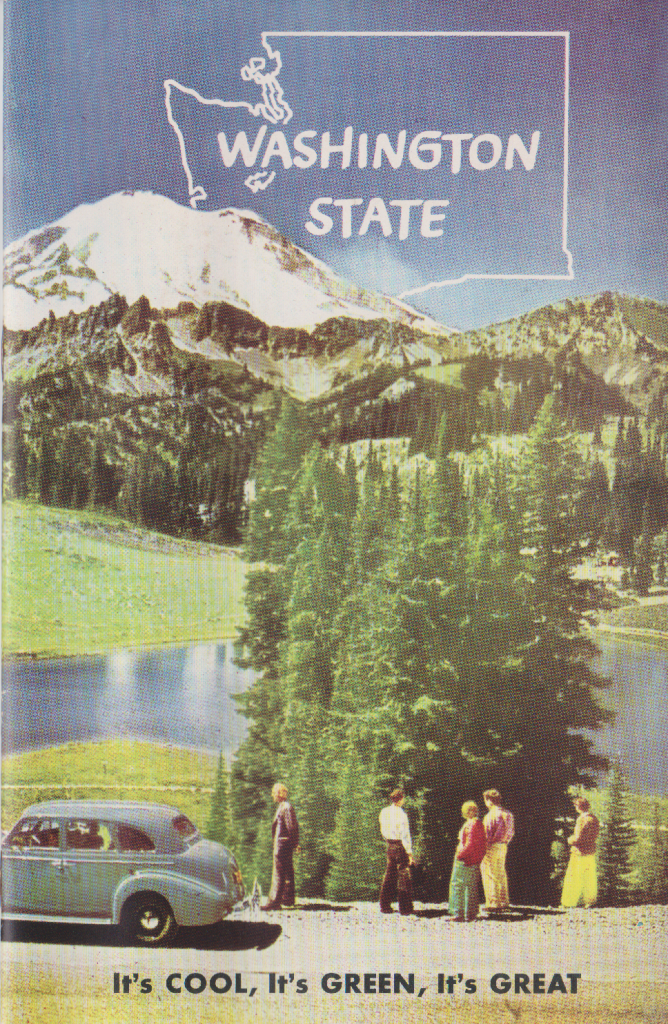Well, fellow travelers, we have reached the end of the road. With the start of autumn looming ahead on Monday, this post–the 13th this summer–will be our last of the Time Traveling Series.
So far, we have ventured north, south, east, and west to everything from mountains to lumber mills to museums. Where we haven’t yet ventured, however, is Seattle.
While the Emerald City’s popularity as a tourist spot really took off after the ’62 World’s Fair, it was certainly a tourist attraction in its own right before the world came to town. And today’s attraction is one that appeals to visitors of all ages.
We’re going to the zoo!

This map shows the Woodland Park Zoo as it appeared in 1956. Back then, both parking and admission were free. Interestingly enough, the book from which this map came, Who’s Who at the Zoo, begins with a brief zoo history:
“Seattle’s children…and all the young at heart…have been ‘going to the zoo’ at Woodland Park for so many years that only genuine old-timers can remember the days when the zoo was out on Lake Washington at Leschi Park. That was before the turn of the century and most folks rode the rattling Yesler Way cable cars out to see the animals.”
At the same time Guy Phinney, an Englishman and early Seattle developer, invested $40,000 in the development of a traditional English park on the shores of Green Lake. Phinney built a home, a rose garden, a trolley line, and developed a deer park on the property before his death in 1893. Seven years later, this park passed from private to public ownership and plans for development began. The animals from the Leschi Zoo, which was owned by the Lake Washington Cable Railway, were donated to this new park.
(Interestingly, Carkeek Park’s first use was solely as a vegetable garden for zoo animal food!)
The Olmstead Brothers (remember them from last week’s post?) were selected to transform Phinney’s private park into an enjoyable and aesthetically pleasing public space. Retaining the formal gardens laid out by Phinney, the Olmsteads constructed new pathways and animal quarters, leaving the lower end of the park as an informal, wooded area. The construction of Aurora Avenue in the 1930s bisected this wooden area, forever dividing Woodland Park into an upper and lower park.
The Zoo, situated in the “upper” park, received several Works Progress Administration upgrades in the 1930s, including beaver ponds and Monkey Island. A 1948 bond provided additional funding for modern buildings and animal habitats.

A children’s zoo was proposed around this time, but did not become a reality until 1967. Additional bonds in 1968 and 1985, as well as the formation of a Zoo Advisory Council in the mid-1970s, allowed the zoo to continue to expand and improve living conditions for its animals.
In 1956, the zoo housed more than 1,500 animals of around 350 species. Today the number is slightly less at 900 animals representing 250 species. Admission is about $23 per adult and parking is $6. It is definitely one of the more expensive attractions explored this summer, but it’s 4.6/5 rating on Google may justify the cost. For a limited, but just as fun zoo experience, I personally recommend attending Wildlights during November and December.

Thank you for joining me this summer as we navigated the world of Washington Tourism pre-1962. Of course, there are lots of neat places to visit that could not possibly be covered in a mere 13 weeks, but I hope the ones mentioned here helped give you some vacation ideas!
As the weather transitions from sun to wind and rain, the content here on the blog will go back to its usual formula of postcards, souvenirs, and other historical articles. I hope to see you again in the future, and enjoy those last few days of summer!



